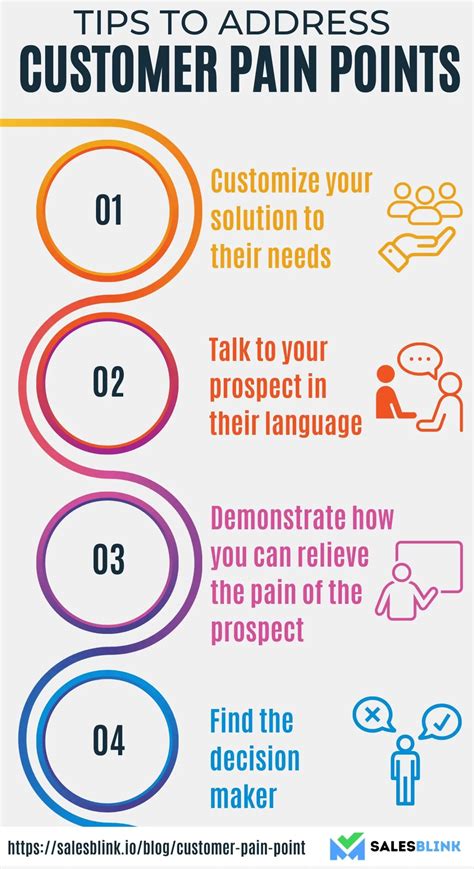Understanding customer pain points and motivations is crucial for businesses to develop effective strategies and deliver products or services that truly meet the needs of their target audience. By delving into the wants and frustrations of customers, businesses can create a roadmap for innovation and differentiation.

Defining Customer Pain Points
A customer pain point is a specific problem or challenge that a customer encounters when attempting to achieve a goal. Pain points can arise from various sources, including:
- Functional: Difficulties or inefficiencies in using a product or service
- Financial: Overpriced or unexpected costs associated with a product or service
- Emotional: Negative experiences or frustrations related to a product or service
- Social: Embarrassment, inconvenience, or other social impacts caused by a product or service
Identifying and Prioritizing Customer Pain Points
To effectively address customer pain points, businesses must first identify and prioritize them. This process involves:
- Conducting customer research: Surveys, interviews, and focus groups provide valuable insights into customer needs and challenges.
- Analyzing customer feedback: Monitoring customer support interactions, social media engagement, and online reviews can help identify common pain points.
- Empathizing with customers: Putting yourself in the shoes of your customers allows you to understand their frustrations and identify potential solutions.
Understanding Customer Motivations
Customer motivations are the underlying reasons why customers seek out products or services. Understanding motivations is critical for developing effective marketing and messaging strategies that resonate with target audiences. Common customer motivations include:
- Solving a problem: Customers purchase products or services to address a specific pain point or challenge.
- Achieving a goal: Customers use products or services to accomplish a particular objective or aspiration.
- Gaining status or recognition: Customers may purchase products or services to enhance their social standing or reputation.
- Avoiding pain: Customers may be motivated to purchase products or services to prevent or mitigate negative consequences.
Effective Strategies for Addressing Customer Pain Points and Motivations
- Developing innovative solutions: Identify creative ways to solve customer pain points and meet their needs.
- Personalizing customer experiences: Tailor products or services to the unique needs and preferences of individual customers.
- Building strong customer relationships: Create a positive and supportive environment that fosters trust and open communication.
- Empowering customers: Provide customers with the tools and resources they need to succeed.
- Continuously monitoring and adjusting: Regularly assess customer feedback to identify new pain points and adjust strategies accordingly.
Real-World Examples of Customer Pain Point Resolution
Case Study 1:
- Company: Uber
- Customer Pain Point: Difficulty in getting a ride in high-demand areas
- Solution: Introduced surge pricing to encourage drivers to operate in high-demand areas.
Case Study 2:
- Company: Spotify
- Customer Pain Point: Limited choice of music without premium subscription
- Solution: Launched a freemium model that provides access to a large music library with limited ads.
Table 1: Common Customer Pain Points
| Pain Point Category | Examples |
|---|---|
| Functional | Website crashes frequently |
| Financial | Subscription fees are too high |
| Emotional | Customer service interactions are frustrating |
| Social | Product usage results in embarrassment |
Table 2: Customer Motivations by Product Category
| Product Category | Common Motivations |
|---|---|
| Technology | Solve problems, gain productivity |
| Apparel | Enhance appearance, express individuality |
| Food and beverage | Satisfy hunger, experience enjoyment |
| Travel | Escape from routine, explore new cultures |
Table 3: Strategies for Addressing Customer Pain Points
| Strategy | Description |
|---|---|
| Customer-centric design | Designing products or services based on deep understanding of customer needs |
| Lean startup methodology | Iterating quickly and testing solutions with real customers |
| Net Promoter Score (NPS) | Measuring customer loyalty and identifying areas for improvement |
| Customer relationship management (CRM) | Managing interactions with customers across multiple channels |
Table 4: Metrics for Measuring Customer Satisfaction
| Metric | Description |
|---|---|
| Customer satisfaction score (CSAT) | Measures overall satisfaction with a product or service |
| Customer effort score (CES) | Measures the ease of doing business with a company |
| Net Promoter Score (NPS) | Measures customer loyalty and willingness to recommend a company |
| Customer lifetime value (CLTV) | Measures the long-term value of a customer to a company |
Understanding customer pain points and motivations is essential for businesses to succeed in the competitive global marketplace. By embracing customer-centric approaches and leveraging a deep understanding of customer needs, businesses can develop innovative solutions that address pain points, fulfill motivations, and build lasting customer relationships.
